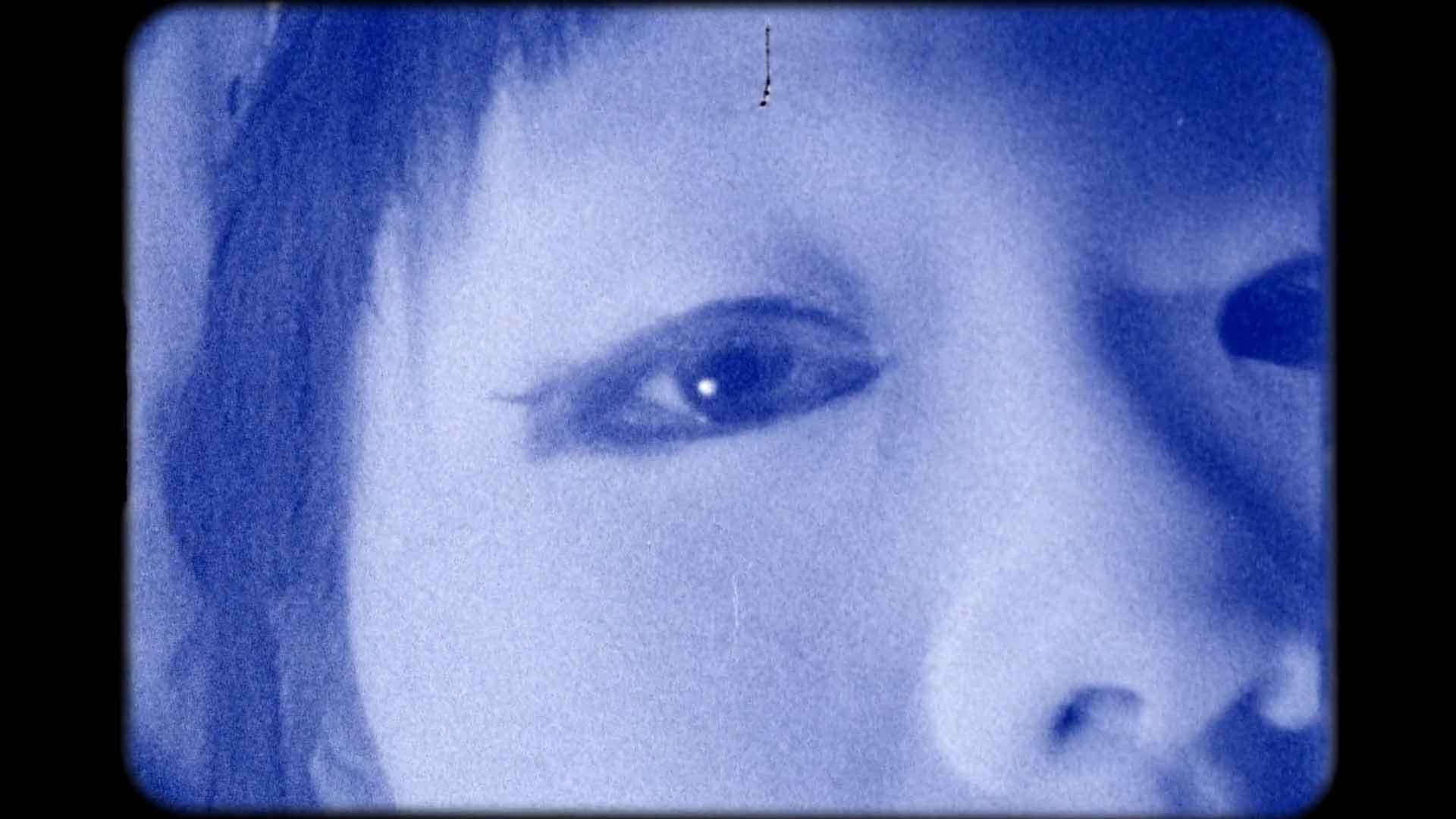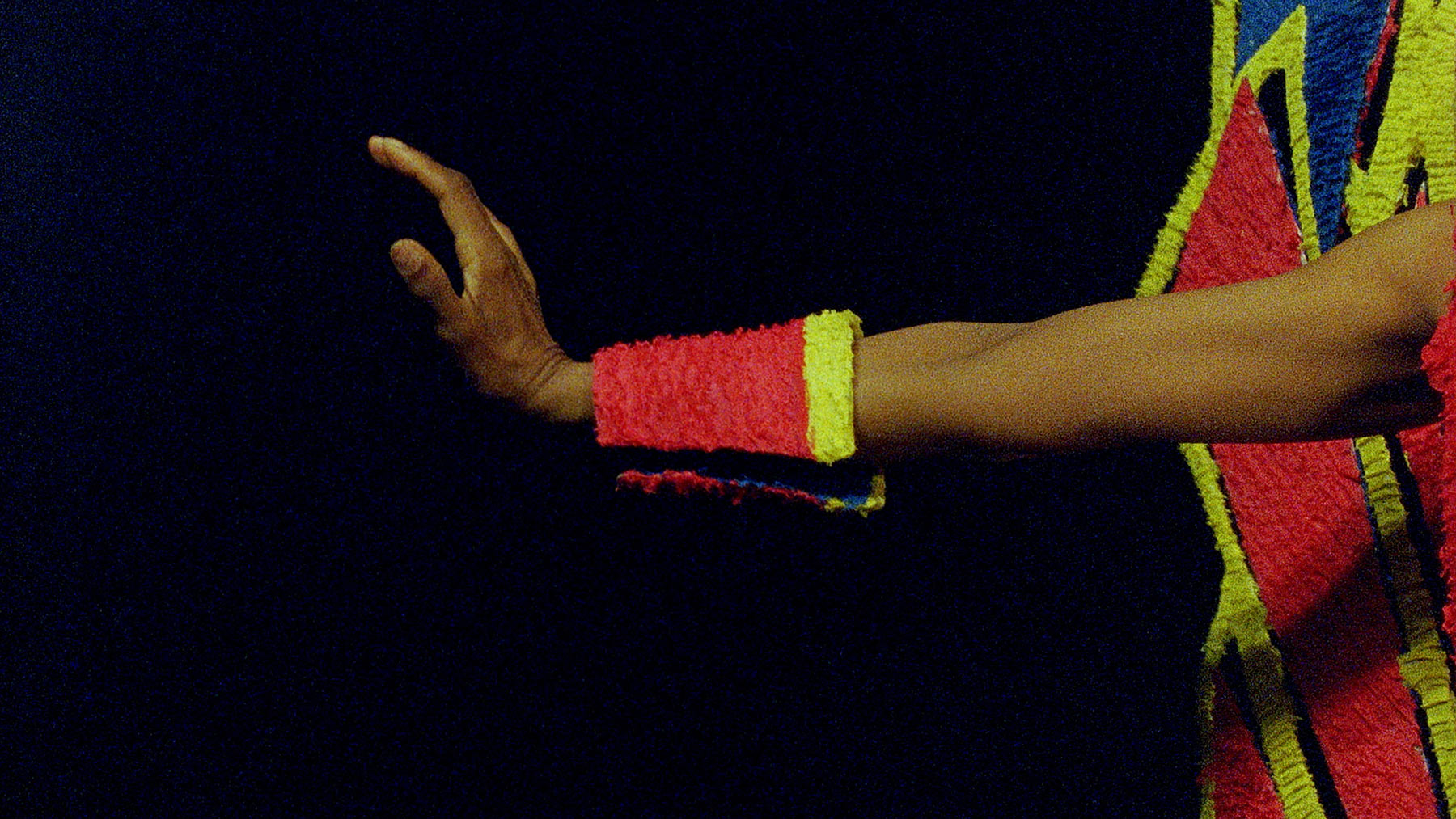Selection #13
48 mins
Film articulations dealing with the anthropological nature of the interpreter and the interpreted through mediated performative touches. The various interplays between the anthropological and the metaphysical create choreographed gestures for the camera, the cinematic quality of mediation unfolds into undiscovered languages. The translation exercises employed in these works are central for potential and actual plurality, how the body may interpret cultural and identity conditions or temporal and physical alterity. By means of orchestrated rhythms and filmed gestures, the translation factor brings to light the conditions of existence, its relationship with meaning and the anthropology of the near. These film works encompass a universal conception of the self, the body and the object of interpretation, a study on motion and space where chanting bodies articulate the properties of the medium to define its own natural untranslatability.
N.S.
Notes on Gestures
48 mins
Film articulations dealing with the anthropological nature of the interpreter and the interpreted through mediated performative touches. The various interplays between the anthropological and the metaphysical create choreographed gestures for the camera, the cinematic quality of mediation unfolds into undiscovered languages. The translation exercises employed in these works are central for potential and actual plurality, how the body may interpret cultural and identity conditions or temporal and physical alterity. By means of orchestrated rhythms and filmed gestures, the translation factor brings to light the conditions of existence, its relationship with meaning and the anthropology of the near. These film works encompass a universal conception of the self, the body and the object of interpretation, a study on motion and space where chanting bodies articulate the properties of the medium to define its own natural untranslatability.
N.S.
Sun 26 May
22:00h / ACUD KINORowland Hill
Tha-at’s right
UK, 2018, 11’ 7’’, 16mm > HD video, Colour, Sound, German Premiere

'Tha-at’s right' is a response to an idiosyncratic review of Stravinsky’s final ballet 'Agon', written by dance critic and poet Edwin Denby in 1959. Collaborating with three dancers and a small music ensemble, director Rowland Hill re-interpreted this review as a choreographic script for a new performance, taking Denby's outlandish metaphorical descriptions of dance and music literally. The result is a series of musical and choreographic gestures for camera that ‘swing between baroque grace and withering bathos’ (The Wire) prompting questions around chaos and control, the role of criticism and the authority of the score.
Credits: Director: Rowland Hill, Producer: Scout Stuart, Performers: Svenja Bühl, Regina Laasmaë, Danielle Summers, Cinematography/Colouring: Paul Daly, Choreography: Svenja Bühl, Rowland Hill, Regina Laasmaë, Danielle Summers, Editing: Rowland Hill, Additional Editing/Titles: Ralph Pritchard, Music: Rowland Hill and Jack Sheen, performed by An assembly, Commissioned by An assembly.
Micheal Lyons
'Nonoko/Kaos No Ma'
Japan, 2018, 5’, Super 8 > HD video, Colour, Silent , German Premiere

The film depicts a space, a time and a situation in rupture with the conventional. Dancer Nonoko Sato was filmed at Gallery Kaos No Ma (Room/Space of Chaos), an independent project of artist and collector Sunamoto Matuo, who creates strange assemblages with pre-war Japanese cultural debris. The performance was recorded in ambient light on ancient Kodachrome Super 8 and developed by hand using instant coffee and vitamin C. The low sensitivity of the film required extended and variable exposure for each image, creating an uneven and distorted representation of time and motion.
Shane Christian Eason
SIN BIN | FIRST STUDY | THE GRIM REAPER
USA, 2018, 4’48’’, HD video, Colour, Sound, Berlin Premiere.

SIN BIN | FIRST STUDY | THE GRIM REAPER is the first film in a series of shorts investigating and deconstructing professional ice hockey players branded as "journeymen," "pests," and "enforcers.” Although these types of players may not be the most skilled, and often assigned to the "Checking Line" or "4th Line" for the duration of their careers, they remain pivotal to their teams, maintaining important responsibilities that can include: tactics of intimidation against opposing teams; enticing and receiving penalties (infractions via the rulebook); and shifting the momentum within the gameplay. Through its use of found footage, as well as archival television and radio broadcasts, the “SIN BIN” film series is an embellishment toward the sport's structured intersections of violence, culture, memory, and youth.
Rhea Storr
Junkanoo Talk
UK, 2017, 12’, 16mm > HD video, colour, sound, Berlin Premiere

Junkanoo Talk investigates the language of celebration through carnival. It employs the techniques of costume crafting particular to Junkanoo- a carnival of the Bahamas. The sound is produced on the body and takes the rhythms of Rake 'n' Scrape music; Scrape music, also particular to the Bahamas. James Baldwin is quoted, speaking of the complexities of being an African American living in France, along with the Bahamian Tourism Minister who speaks of appropriation and the body as a voice. Colour is coded in a way which suggests an internal logic, the layering on of a costume comparative to the layering on of a language. The film seeks a near forensic way of looking, yet the viewer is systematically denied the full picture. What is concealed or revealed is carefully orchestrated in order to facilitate a questioning of carnival.The body is considered a highly abstracted mediator to confront an identity politics which is in between. Authored by an artist of mixed race, Junkanoo Talk questions the slippages which occur when a language performs across cultures, asking what can be translated and where resistances occur.
Greg Biermann
New York Gradual
USA, 2018, 15’, HD video, colour, sound, European Premiere

New York Gradual is a digital age motion study consisting of three dolly shots taken during lunch hour in mid-town Manhattan. There are three sections, each of which is set to one piece of synthetic choral/electronic music that I composed for the piece. Within each section the images repeat in blocks of five frames at a time and gradually advance one frame at a time for each block. The result of this simple pattern interacting with the imagery is a fascinating study of ordinary street life. The term gradual has a double meaning here. It refers to the slow and insistent pace of the imagery and to a type of polyphonic liturgical choral music that relates to the soundtrack.
SCHEDULE 2019
Thu 23
20:00h / ACUD STUDIO
Selection #1
Summoning Bell
21:15h / ACUD GALLERY
Live performance
Ojoboca
External Shudders
Fri 24
16:30h / ACUD HOF
Opening
Books, Magazines, Sound
Occulto Programme
17:00h / ACUD STUDIO
Selection #2
Through a Glass, Darkly
18:30h / ACUD STUDIO
Selection #3
Melodramas of Futility
19:30h / ACUD KINO
Selection #4
Photosynthesis (Alchemies of Light)
21:00h / ACUD KINO
Selection #5
Heterotopias
22:30h / ACUD KINO
Selection #6
Frameworks and Translations
Sat 25
15:00h / ACUD HOF
Panel Discussion
Occulto Programme
17:00h / ACUD STUDIO
Selection #7
Taxonomic Encounters
17:00h / ACUD HOF
Books, Magazines, Sound
Occulto Programme
18:30h / ACUD STUDIO
Selection #8
Echoes for Revival
20:00h / ACUD KINO
Special Programme
Expanded
Painlevé
23:00h / ACUD CLUB
Live Music & DjSet
Occulto Clubnight
Sun 26
13:00h / ACUD HOF
Books, Magazines, Sound
Occulto Programme
with brunch
16:00h / ACUD STUDIO
Selection #9
You Are Here
17:15h / ACUD STUDIO
Selection #10
Unnatural History
19:00h / ACUD KINO
Selection #11
Repeat / Replace
20:45h / ACUD KINO
Selection #12
Ghosts of the Market
22:00h / ACUD KINO
Selection #13
Notes on Gestures